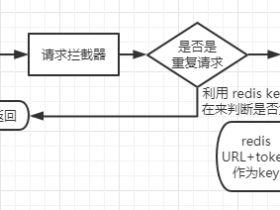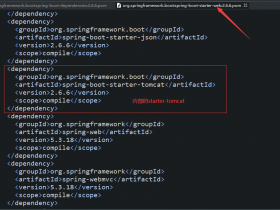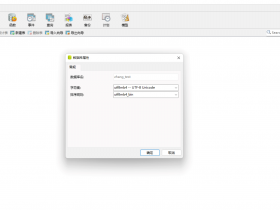Springboot优雅的开启定时任务Scheduled,并配置线程池异步执行,外加封装管理教学,解决定时任务太多,影响性能难管理问题。提供使用示例供使用者参考,让初学者快速上手。
1. 环境
<dependency>
<groupId>org.springframework.boot</groupId>
<artifactId>spring-boot-starter</artifactId>
</dependency>
2. 开始定时任务
- 创建定时任务
ScheduleRunner.java
@Component
@Slf4j
public class ScheduleRunner {
/**
* 每秒
*/
@Scheduled(cron = "*/1 * * * * ?")
public void everySecond() {
log.info("(每秒)定时任务执行了");
}
}
- 启动类加上
@EnableScheduling
@SpringBootApplication
@Slf4j
@EnableScheduling
public class SchedulerApplication {
public static void main(String[] args) {
SpringApplication.run(SchedulerApplication.class, args);
}
}
@Scheduled使用说明 我们可以通过在线工具生成cron https://cron.qqe2.com/
# cron : {秒数} {分钟} {小时} {日期} {月份} {星期} {年份(可为空)}
# 如:
# 每秒
@Scheduled(cron = "*/1 * * * * ?")
# 每分钟
@Scheduled(cron = "0 */1 * * * ?")
# 每五分钟
@Scheduled(cron = "0 */5 * * * ?")
# 每小时
@Scheduled(cron = "0 0 */1 * * ?")
# 每天上午8点
@Scheduled(cron = "0 0 8 * * ?")
- 到这里我们的定时任务就基本启动来了,但是当我们需要执行的任务很多时,这种阻塞的写法是不行的,并不能满足我们的性能要求,接下来教大家如何配置异步定时任务。
3. @Async异步执行定时任务
- 首先我们需要开启Springboot线程池
ExecutorConfig.java
/**
* 配置我们定时任务的线程池
*
* @author ding
*/
@Configuration
@EnableAsync
@Slf4j
public class ExecutorConfig implements AsyncConfigurer {
/**
* 设置核心线程数
*/
private static final int CORE_POOL_SIZE = 4;
/**
* 设置最大线程数,只有在缓冲队列满了之后才会申请超过核心线程数的线程
*/
private static final int MAX_POOL_SIZE = 8;
/**
* 设置缓冲队列大小
*/
private static final int QUEUE_CAPACITY = 100;
/**
* 设置线程的最大空闲时间,超过了核心线程数之外的线程,在空闲时间到达之后会被销毁
*/
private static final int KEEP_ALIVE_SECONDS = 60;
/**
* 设置线程名字的前缀,设置好了之后可以方便我们定位处理任务所在的线程池
*/
private static final String NAME_PREFIX = "定时任务线程";
@Bean(name = "scheduleExecutor")
public Executor asyncServiceExecutor() {
log.info("开启SpringBoot的线程池!");
ThreadPoolTaskExecutor executor = new ThreadPoolTaskExecutor();
executor.setCorePoolSize(CORE_POOL_SIZE);
executor.setMaxPoolSize(MAX_POOL_SIZE);
executor.setQueueCapacity(QUEUE_CAPACITY);
executor.setKeepAliveSeconds(KEEP_ALIVE_SECONDS);
executor.setThreadNamePrefix(NAME_PREFIX);
// 设置拒绝策略:当线程池达到最大线程数时,如何处理新任务
// CALLER_RUNS:在添加到线程池失败时会由主线程自己来执行这个任务,
// 当线程池没有处理能力的时候,该策略会直接在execute方法的调用线程中运行被拒绝的任务;如果执行程序已被关闭,则会丢弃该任务
executor.setRejectedExecutionHandler(new ThreadPoolExecutor.CallerRunsPolicy());
executor.initialize();
return executor;
}
@Override
public Executor getAsyncExecutor() {
return asyncServiceExecutor();
}
@Override
public AsyncUncaughtExceptionHandler getAsyncUncaughtExceptionHandler() {
return (ex, method, params) -> log.error(String.format("执行异步任务'%s'", method), ex);
}
}
- 然后我们在定时任务上加
@Async("scheduleExecutor")启动异步就可以啦
@Component
@Slf4j
public class ScheduleRunner {
/**
* 每秒
*/
@Scheduled(cron = "*/1 * * * * ?")
@Async("scheduleExecutor")
public void everySecond() {
log.info("(每秒)定时任务执行了");
}
}
4. 定时任务封装,优雅的执行定时任务
- 创建接口
ScheduleService.java,具体的执行时间自行修改
/**
* 定时任务
*
* @author qiding
*/
public interface ScheduleService {
/**
* 每秒
*/
default void everySecond(){}
/**
* 每分钟
*/
default void everyMinute(){}
/**
* 每五分钟
*/
default void everyFiveMinute(){}
/**
* 每小时
*/
default void everyHour(){}
/**
* 每天上午8点
*/
default void everyDayEightClock(){}
}
- 修改我们的
ScheduleRunner.java
这里我们利用了多态的原理,让springboot加载所有实现了ScheduleService的bean,然后统一执行。
/**
* 统一执行定时任务,减少系统开销
* {秒数} {分钟} {小时} {日期} {月份} {星期} {年份(可为空)}
* @author qiding
*/
@Component
@Slf4j
@RequiredArgsConstructor
public class ScheduleRunner {
/**
* 装配所有定时任务
*/
private final List<ScheduleService> scheduleServiceList;
/**
* 每秒
*/
@Scheduled(cron = "*/1 * * * * ?")
@Async("scheduleExecutor")
public void everySecond() {
scheduleServiceList.forEach(ScheduleService::everySecond);
}
/**
* 每分钟
*/
@Scheduled(cron = "0 */1 * * * ?")
@Async("scheduleExecutor")
public void everyMinute() {
scheduleServiceList.forEach(ScheduleService::everyMinute);
}
/**
* 每五分钟
*/
@Scheduled(cron = "0 */5 * * * ?")
@Async("scheduleExecutor")
public void everyFiveMinute() {
scheduleServiceList.forEach(ScheduleService::everyFiveMinute);
}
/**
* 每小时
*/
@Scheduled(cron = "0 0 */1 * * ?")
@Async("scheduleExecutor")
public void everyHour() {
scheduleServiceList.forEach(ScheduleService::everyHour);
}
/**
* 每天上午8点
*/
@Scheduled(cron = "0 0 8 * * ?")
@Async("scheduleExecutor")
public void everyDayEightClock() {
scheduleServiceList.forEach(ScheduleService::everyDayEightClock);
}
}
- 接下来在我们需要创建定时任务的时候,只要重写
ScheduleService.java接口编写我们的业务逻辑就可以啦 - 示例1
/**
* 执行示例
*
* @author ding
*/
@Component
@Slf4j
public class Test1TaskImpl implements ScheduleService {
@Override
public void everySecond() {
log.info("(每秒)定时任务执行了");
}
}
- 示例2
/**
*
* 执行示例
*
* @author ding
*/
@Component
@Slf4j
public class Test2TaskImpl implements ScheduleService {
@Override
public void everyMinute() {
log.info("(每分钟)定时任务执行了");
}
}
5. 最终效果






